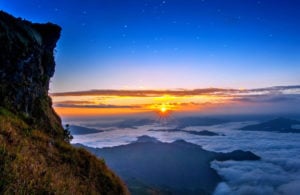Wat Chedi Luang - Historical Temple, Heart of Chiang Mai
If you’re a seasoned traveler, you can’t miss out on the magnificent Wat Chedi Luang in Chiang Mai. This temple is a true gem, showcasing the splendid Lanna architecture and culture. Its roots trace back to the 14th century, carrying a rich and extraordinary history that will captivate any explorer. Including a visit to this ancient temple should be a top priority on your itinerary when exploring the enchanting Chiang Mai province.
Prepare to be awestruck as you step into the heart of the old city, where Wat Chedi Luang proudly stands. Once a revered sanctuary for the Emerald Buddha, the holiest Buddha image in Thailand, it still houses a remarkable jade replica of this sacred statue. Marvel at the intricate sculptures of elephants, serpents, and Buddhas that embellish the temple’s towering Chedi (pagoda), dominating the landscape. But the allure doesn’t end there.
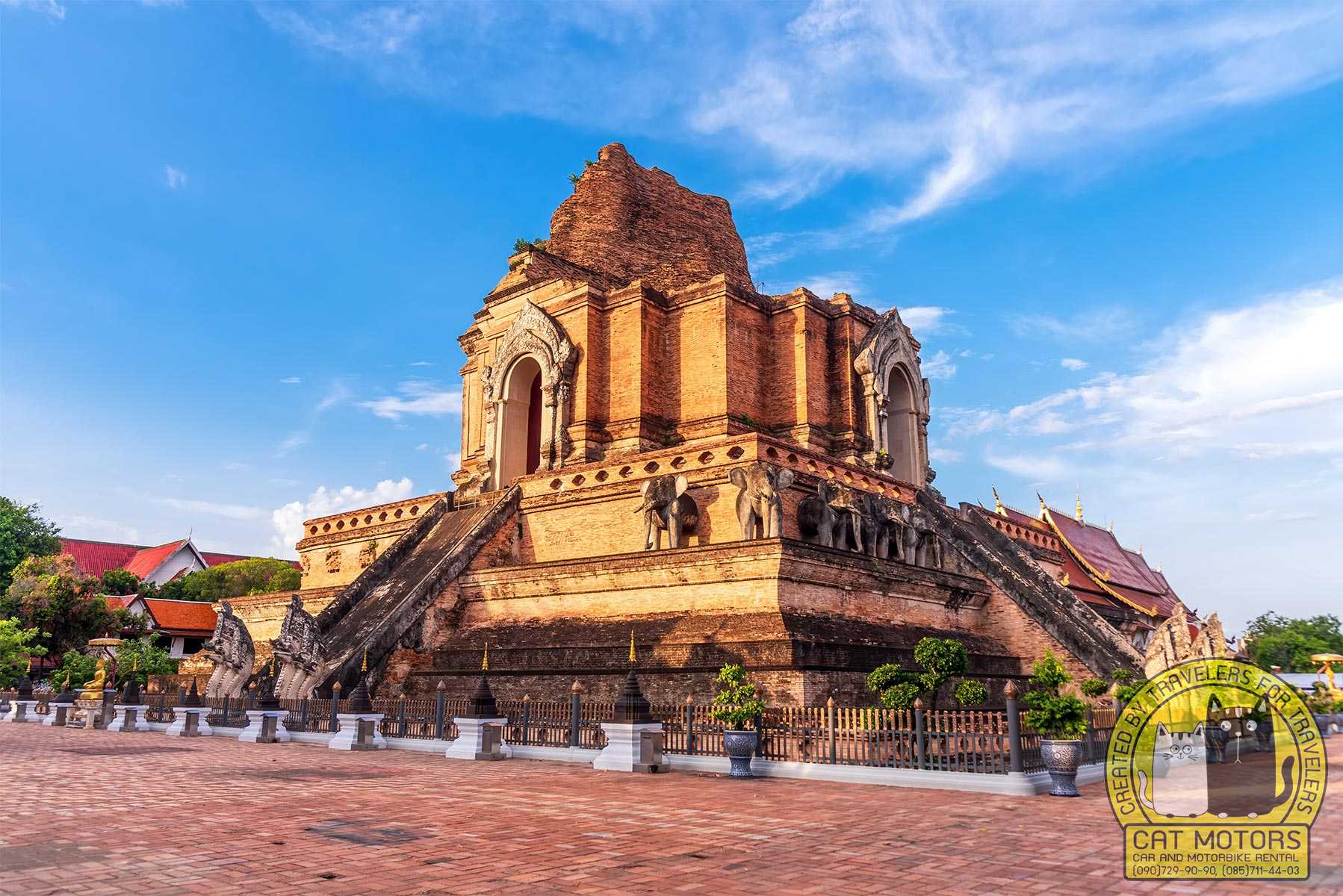
Wat Chedi Luang Chiang Mai means the Temple of the Biggest Chedi of Chiang Mai. However, the word Luang can be interpreted not only as biggest, but also as main. Therefore, an alternative name for this attraction is Temple of the Main Chedi of Chiang Mai.
Being a popular destination, Wat Chedi Luang offers more than just its grandeur. You’ll find a plethora of delectable eateries, fascinating attractions, and engaging activities in its vicinity. Immerse yourself in the vibrant local culture and savor the flavors of the region while exploring this spiritual haven.
The sheer size, beauty, and significance of Wat Chedi Luang as a spiritual and cultural center make it an impressive sight to behold. In this comprehensive travel guide, you’ll delve deeper into the essence of this Buddhist temple and understand why it’s a must-visit. Discover the temple’s origin and evolution, learn how to navigate the magnificent Chedi Luang Stupa, and uncover the exciting nearby attractions that await your exploration. Don’t miss out on this extraordinary experience that combines history, spirituality, and adventure.
A Journey Through The Past Of The Big Stupa
Wat Chedi Luang, a timeless masterpiece in Chiang Mai, carries within its ancient walls a captivating history that echoes the city’s evolution and the esteemed Lanna Kingdom. Wat Chedi Luang, Wat Sukmin, and Wat Ho Tham were the initial three temples that formed the current temple grounds.
It holds immense significance for the people of Chiang Mai, housing both the revered city pillar and a replica of the sacred Emerald Buddha, two cherished symbols of Thai Buddhism.
Fun fact: Standing as once the tallest structure in ancient Chiang Mai, the temple of the big Stupa majestic presence once soared over 80 meters into the sky (over 260 feet), but time and destruction reduced its grandeur to approximately 60 meters (around 197 feet). But nobody knows for sure if it was done by an earthquake or cannon fire during the recapture of Chiang Mai during the 1775 Burmese war.
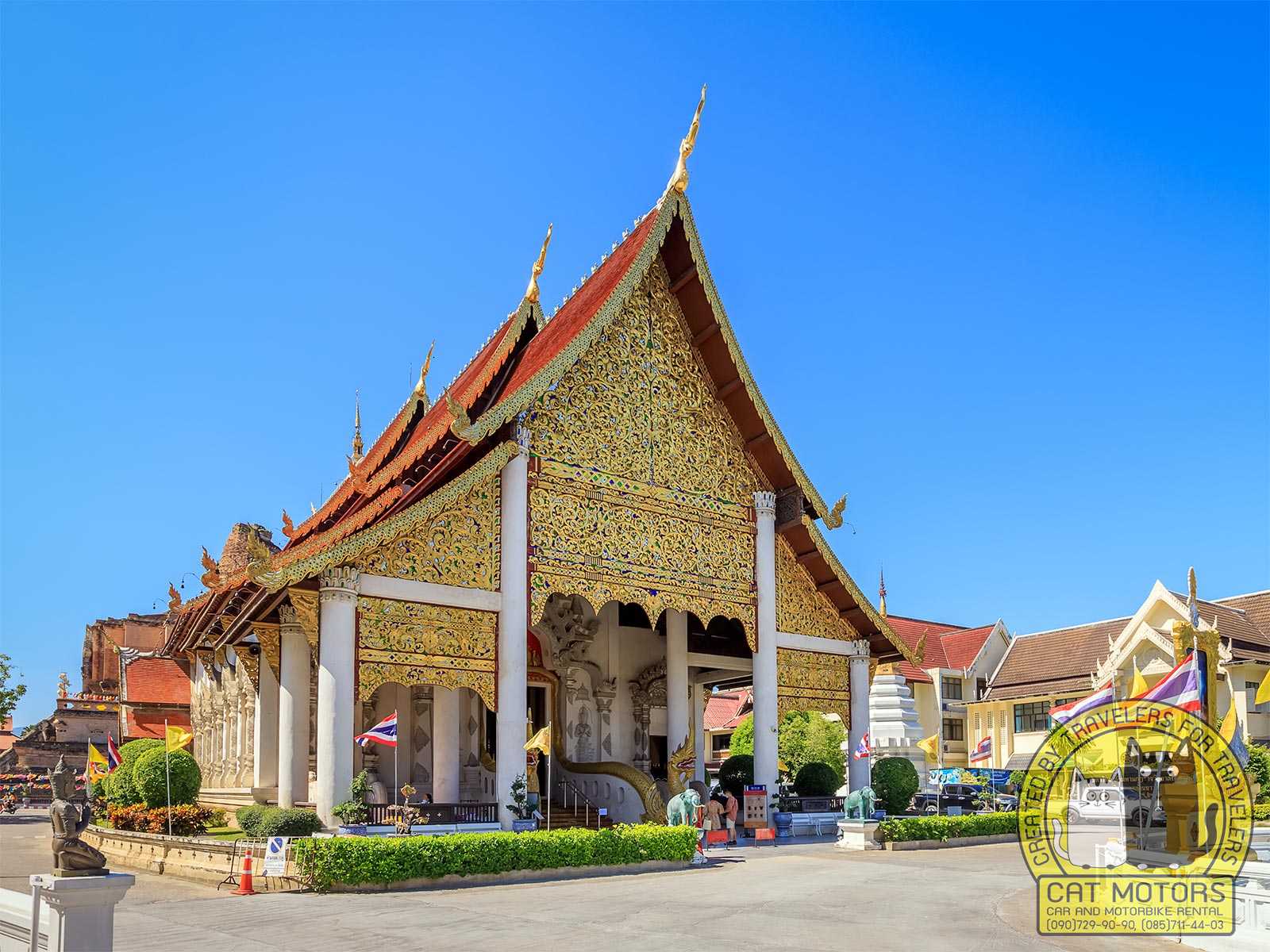
A viharn is a building housing a Buddha images. There are several varieties of construction. For example, viharn luang – is a viharn at the end connected to the stupa or pagoda.
The main entrance contains a stunning Naga stairway going up to the massive chedi, which is one of Thailand’s most gorgeous Naga statues.
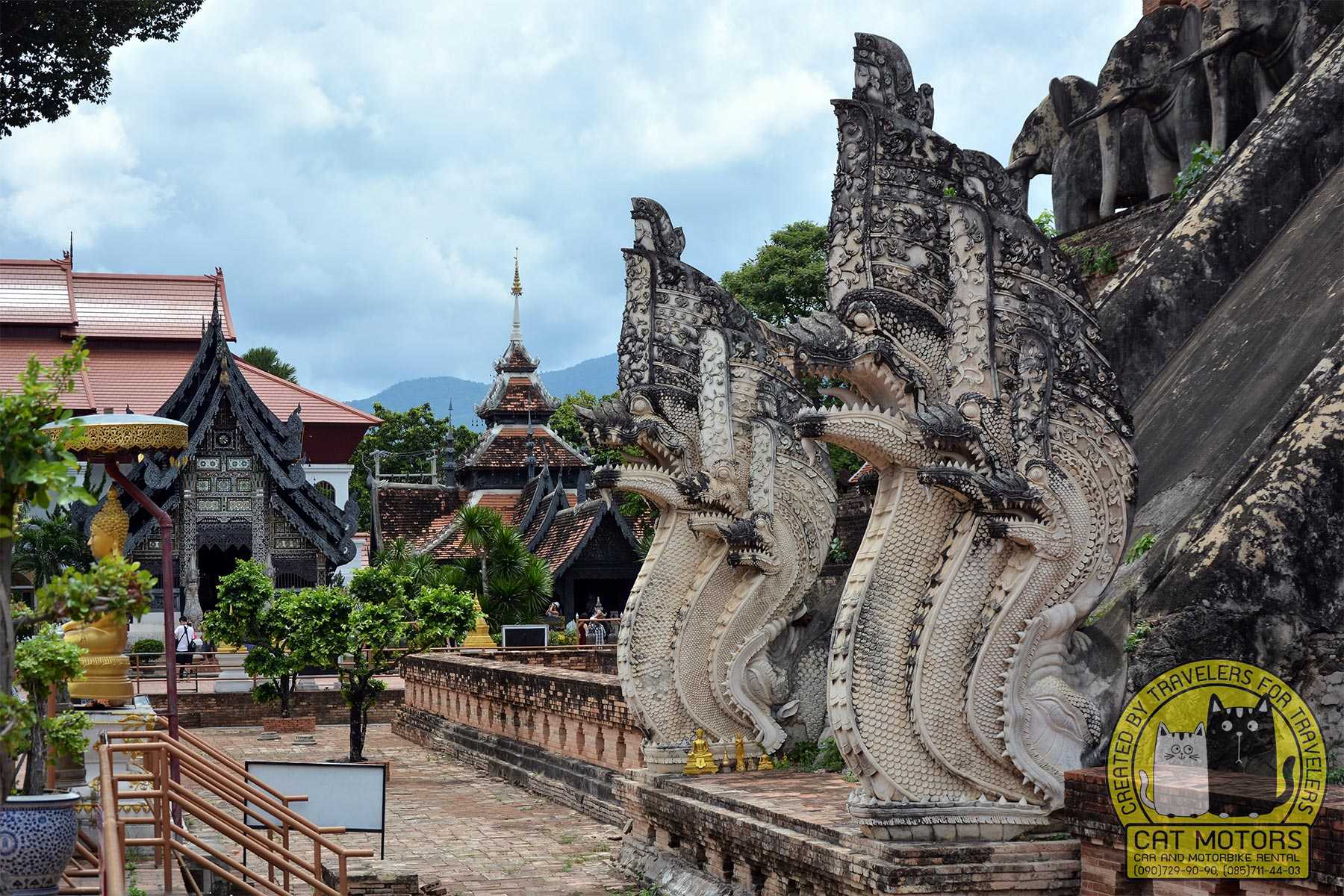
Furthermore, Phra Chao Attarot, an amazing standing Buddha eighteen cubits tall with the right hand uplifted in Abhaya mudra, was constructed by King Tilokaraj’s mother, Tilokachuda, in 1411 during King Rama V’s reign.
Chan Sirichando was a famous monk who served as the previous abbot of Wat Chedi Luang and was instrumental in the restoration of the chedi in 1928.
He was also active in educating Buddhists. Therefore, even one hundred years later, there is still much literature published in Thailand based on the practice and study of the Dhamma in accordance with his precepts.
One of the most famous books is Ways Of Meditation Practice And Teaching Dhamma Of Phra Upali Kunupamajarn republished by Mahamakut Buddhist University in 2008. Unfortunately, it is only available in Thai.
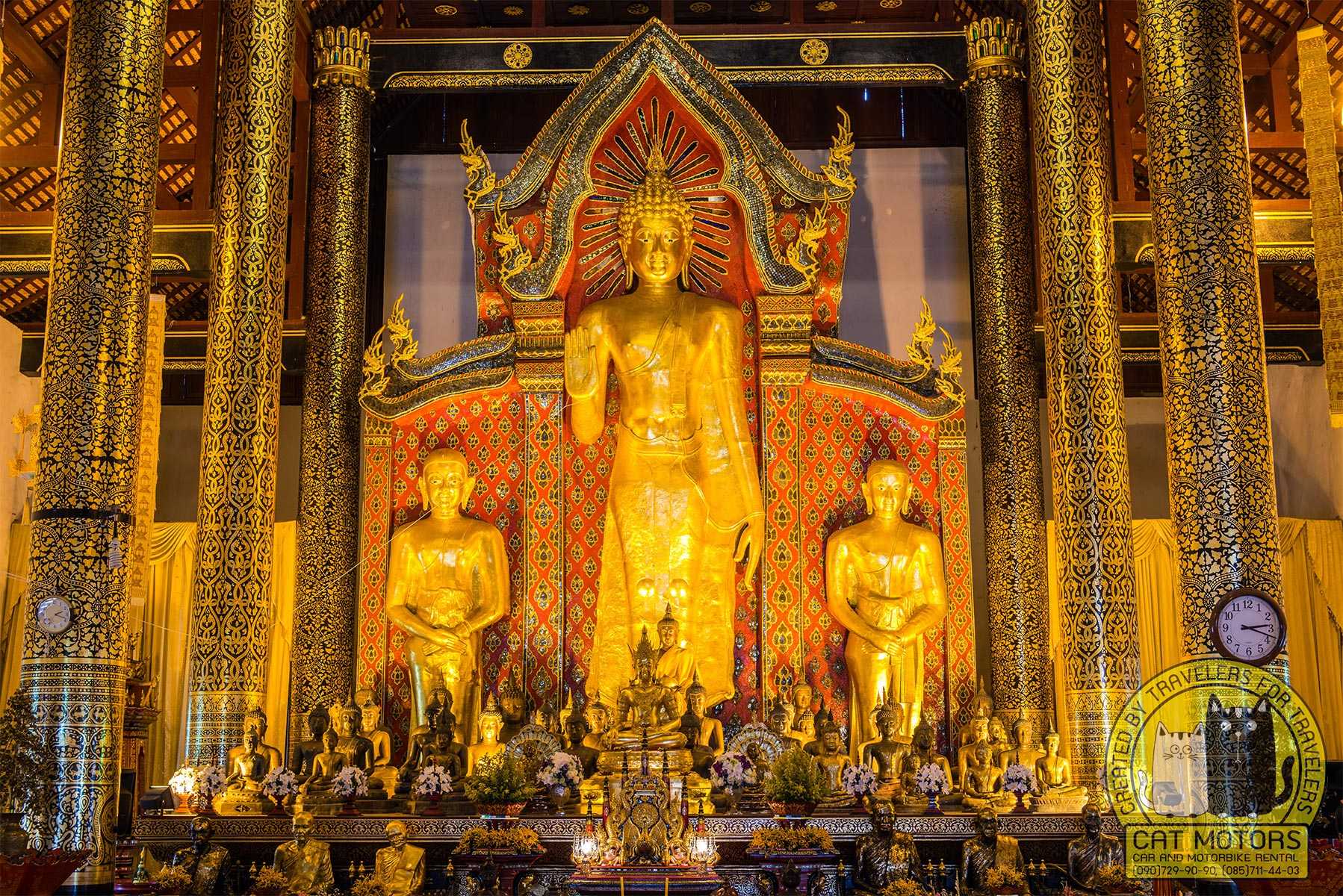
In Buddhism and other Indian religions, the Abhaya mudra is a gesture of reassurance and safety that dispels fear and grants divine protection and bliss. The palm of the right hand is facing outwards and is held upright. This is one of the earliest mudras found on Hindu, Buddhist, Jain, and Sikh images.
The Origin: Unveiling The Roots
The origins of Wat Chedi Luang can be traced back to when King Saen Muang Ma planned to bury his father’s remains and undertook a noble endeavor in the late 14th century to construct a temple that would serve as their final resting place.
And when selecting a site in the heart of the old city, the king laid the foundation for an expansive chedi, intending to build a monumental pagoda. Unfortunately, fate had other plans, and King Saen Muang Ma passed away before the completion of this ambitious project, leaving the temple unfinished for many decades.
It was not until the mid-15th century, during the reign of King Tilokaraj, that the temple’s construction found its ultimate culmination. King Tilokaraj, a monarch known for his fervent devotion to Buddhism, expanded and embellished this respected Buddhist temple.
This visionary ruler also bestowed upon the temple the honor of housing the Emerald Buddha, the most venerated Buddha image in Thailand, which found its sanctuary within a niche on the eastern side of the Chedi. The temple flourished as the royal temple of the Lanna Kingdom, emerging as a revered center for Buddhist study and worship.
Before the structure collapsed, the Stupa towered 82m high and had a base diameter of 54m, reigning as the tallest structure in Chiang Mai’s ancient times.
While Wat Chedi Luang stands as a remarkable example of Lanna architecture, visitors should also be mindful of the dress code when visiting sanctuaries in Thailand, such as Wat Doi Suthep. For more detailed information on the dress code requirements at Wat Doi Suthep and the importance of adhering to local traditions, please refer to the article Explore Wat Phra That Doi Suthep: Lanna Kingdom’s Treasure.
The Trials Of Time: Restoration And Transformation
The temple, once a paragon of grandeur, succumbed to ruin, and the sacred Emerald Buddha was subsequently relocated to Luang Prabang in Laos by 1551. Wat Chedi Luang languished in disrepair for centuries until King Ananda Mahidol (Rama VIII) initiated partial restoration efforts in 1928.
In 1992, a significant restoration project, supported by UNESCO and the Japanese government, commenced stabilizing and reconstructing the Chedi. However, debates emerged regarding the design and style of the new elements, which leaned towards Central Thai aesthetics rather than the traditional Lanna heritage.
In 1995, on the occasion of the Chedi’s 600th anniversary and Chiang Mai’s 700th anniversary, King Bhumibol Adulyadej (Rama IX) bestowed a jade replica of the Emerald Buddha upon Wat Chedi Luang. This precious replica, known as Phra Yok, found its place in the same sacred niche that once cradled the original statue.
Majestic Marvels of the Phra Chedi Luang
Also known as the big Stupa, the Chedi Luang Stupa stands as the centerpiece and crowning jewel of Wat Chedi Luang, commanding attention with its colossal presence on the temple grounds and Chiang Mai’s skyline. As one of the city’s oldest and grandest structures, it serves as a testament to the opulence and influence of its bygone era.
Formerly the sacred abode of the revered Emerald Buddha, the Chedi continues to cradle a jade replica of this hallowed statue to this day. Buddhist devotees hold the Stupa in deep reverence, firmly believing it safeguards the relics of Buddha and enlightened beings.
The Stupa has endured multiple restoration efforts throughout the centuries, prompted by natural calamities and human interventions. Notably, in 1545, destruction rocked Chiang Mai, leading to the collapse of the structure’s upper section.
And included in the 1992 project, spearheaded by UNESCO and the Japanese government, one of their primary goals was to stabilize and reconstruct the Stupa (including other damaged elements of Wat Chedi Luang). Residing within the niche that once held the original, this replica added another layer of resplendence to the Stupa’s history.
The Chedi Luang Stupa boasts an array of exceptional features that set it apart from other holy structures in Thailand.
- Its immense size and commanding silhouette leave visitors awestruck, gazes drawn to its four sides, each adorned with an intricately carved staircase leading to a sacred niche housing a Buddha image.
- The Stupa is also notable for its four niches that face the four cardinal directions, each containing a standing Buddha statue. The eastern niche holds a replica of the Emerald Buddha (Phra Yok) made from black jade. In contrast, the other three niches hold statues of Phra Sam Budda Jinnalang Sirirat, Phra Maha Thera Munee Rattanapun, and Phra Sappanyu Munee Wong Sirirat.
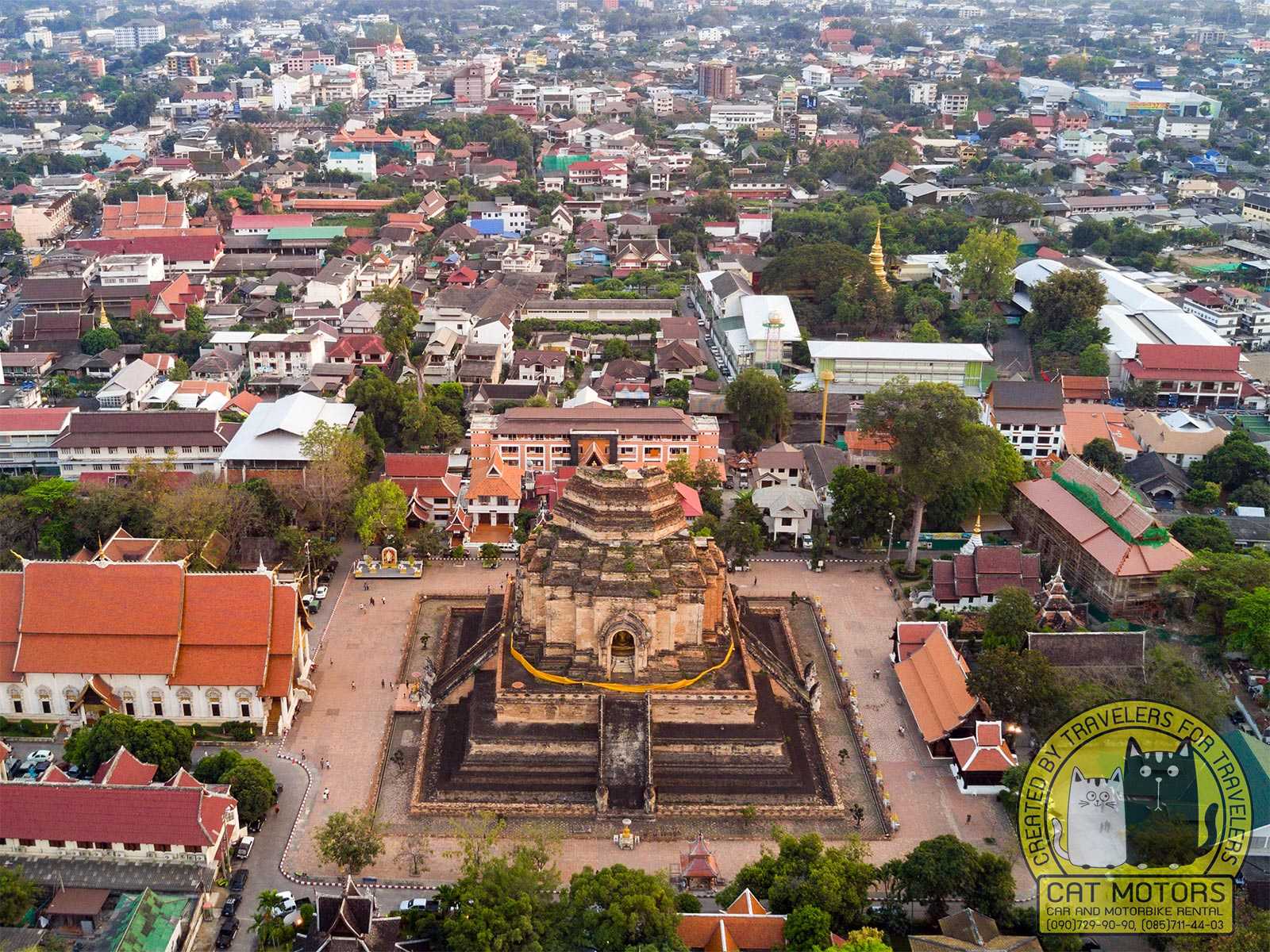
In the 15th century, Chiang Mai became Southeast Asia’s most important center of Buddhist philosophy, preaching, and chronicling. At that time, there was an active movement in Chiang Mai to strengthen the Theravada, and new Theravada communities were established, whose influence became dominant. Direct Lanna-Lankan religious ties expanded, and the missionary activities of Lankan and local Theravada preachers in the Lanna kingdom intensified.
For several decades the royal throne of Chiang Mai was settled by the great King Tilokaraj (reigned 1441-1487). During this time, dozens of major Buddhist monasteries were built, hundreds of stupas and other religious buildings were erected, and thousands of Buddha statues were cast.
Twenty-eight elephant statues were placed around the chedi. According to religious superstitions, the elephant statues were supposed to strengthen the city, bring good luck to the city’s inhabitants, and bring peace to the kingdom of Lanna.
Also, in the past, the eight elephants were worshipped because of the belief of the locals that these elephants would have the power to protect the city. Each of these eight elephants has its own name.
Meaning of the elephant names
Mek Bang Wan (เมฆบังวัน)
When an enemy invades the kingdom, the sky will darken, and a thick fog will descend on the land. Unable to find their way around, the invaders will be frightened and flee. The name of the first elephant is “Mek Bang Wan,” which means “clouds of mist that obscure the day.”
Kom Pon Saen (ข่มพลแสน)
When invaders approach an army of defenders of a city, although the enemy has hundreds of thousands of brave warriors, it will cause intoxication and forgetfulness. Unable to control their minds, the invaders will be disorganized and mentally broken and leave the battlefield in a hurry. The name of the second elephant is “Kom Pon Saen,” which means “oppressing and terrifying an army of a hundred thousand.”
daap saen daam (ดาบแสนด้าม)
When the enemy invades, even though the troops are many and hundreds of thousands of swords, knives, machetes, and sharp pikes, the enemy cannot come close to inflict pain. The enemy will only have broken will and flee. Hence the name of the third elephant is “Daap Saen Daam,” which means “one hundred thousand swords.”
Hok Saen Lam (หอกแสนลำ)
When the enemy starts a fight, even though he has a brave army, long sharp swords, and hundreds of thousands of spears, he can not pursue the city’s defenders. The only thing left for the enemy to do is to disperse and flee the battlefield. Hence the name of the fourth elephant, “Hok Saen Lam,” which means “one hundred thousand spears.”
Bpeun Saen Hae Long (ปืนแสนแหล้ง)
When the enemy invades, even with a large number of troops, hundreds of thousands of guns cannot harm the inhabitants of a city. Hence the name of the fifth elephant is “Bpeun Saen Hae Long,” which means “one hundred thousand firearms and cannons.”
naa mai saen giiang (หน้าไม้แสนเกี๋ยง)
When invaders invade, although they have a massive army with hundreds of thousands of crossbows, they cannot do harm and must leave the battlefield. The name of this elephant is “Naa Mai Saen Giiang,” which means “one hundred thousand crossbows.”
saen keuuan gan (แสนเขื่อนกั้น)
When the enemy dares to invade the city, even if the army consists of one hundred thousand fighting elephants, they cannot enter the city, even if the elephants try to force them to do so, after which panic will overtake the enemy, and they will retreat. Hence the name is “Saen Keuuan Gan,” which translates to “one hundred thousand embankment blocking the way.”
Fai Saen Dtao (ไฟแสนเต๋า)
When the enemy comes to invade the city, it will be as hot as if there were a burning fire all around. The enemy will not want to burn alive and flee the battlefield in agony. That’s why they called it “Fai Saen Dtao” which means “one hundred thousand burning flames.”
Reclining Buddha
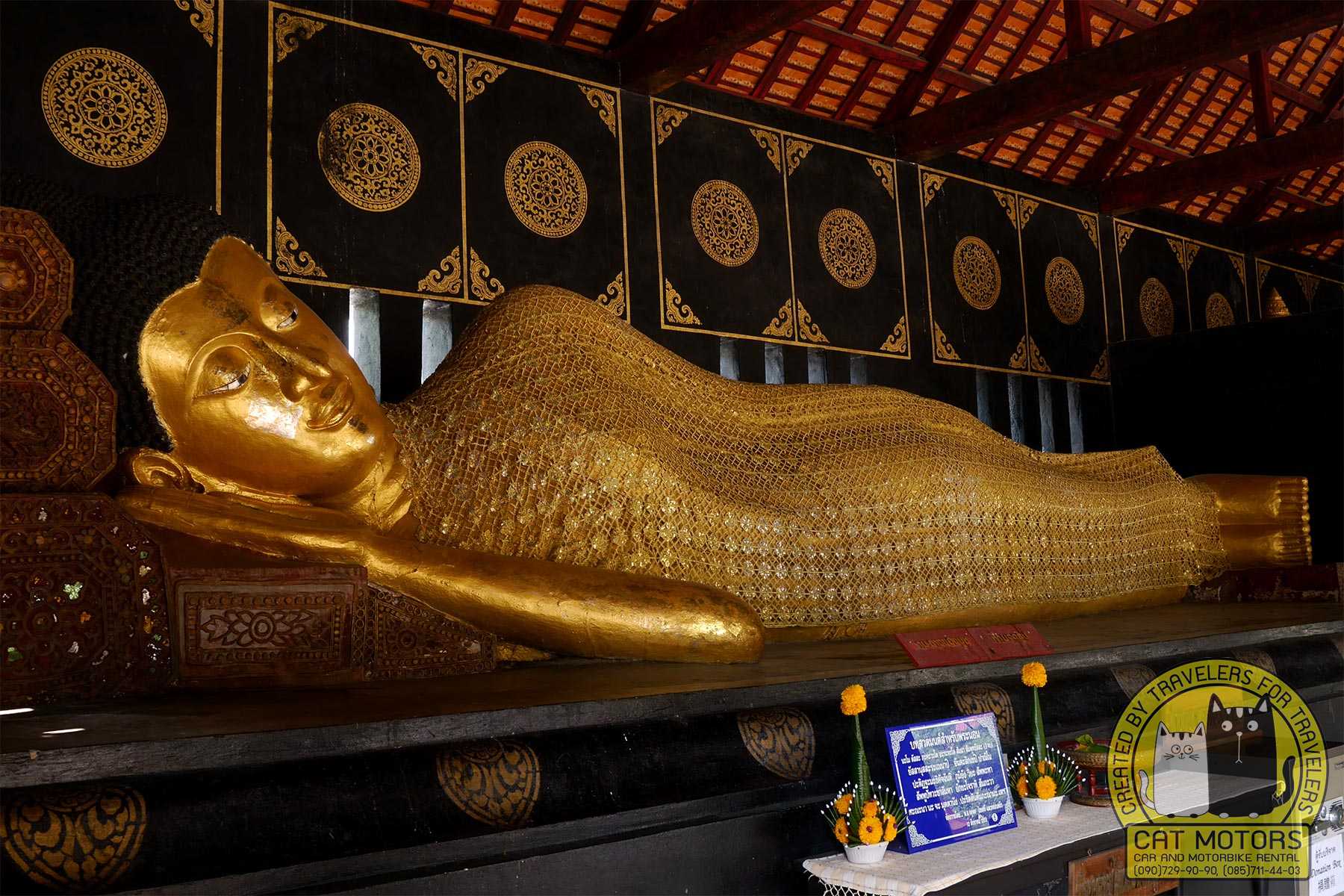
After exploring the viharn and walking around the chedi, you will find a reclining Buddha, 1.93 meters high and 8.70 meters long. Although no one knows the exact date of this sculpture, legend has it that this statue of Buddha was placed during the construction of the chedi in the 14th century. So, presumably, this statue is more than 600 years old. In 2020, it was restored, and it now has a very beautiful look.
Sao Inthakin Chiang Mai City Pillar
The pillar is believed to have been constructed by King Mangrai at the city’s establishment on April 12, 1296, at Wat Sadue Mueang, also known as Wat Inthakhin on Inthawarorot road. In 1800, Lanna King Kawila moved the city pillar to its current place within a shrine on the temple grounds of Wat Chedi Luang.
Lak Mueang, which literally translates to “city pillar” in Thai, can be found in almost every city in Thailand. Usually kept at what is known as a shrine (Thai: ศาลหลักเมือง), which is also believed to be the dwelling place of Chao Pho Lak Mueang (เจ้าพ่อหลักเมือง), the city spirit deity.
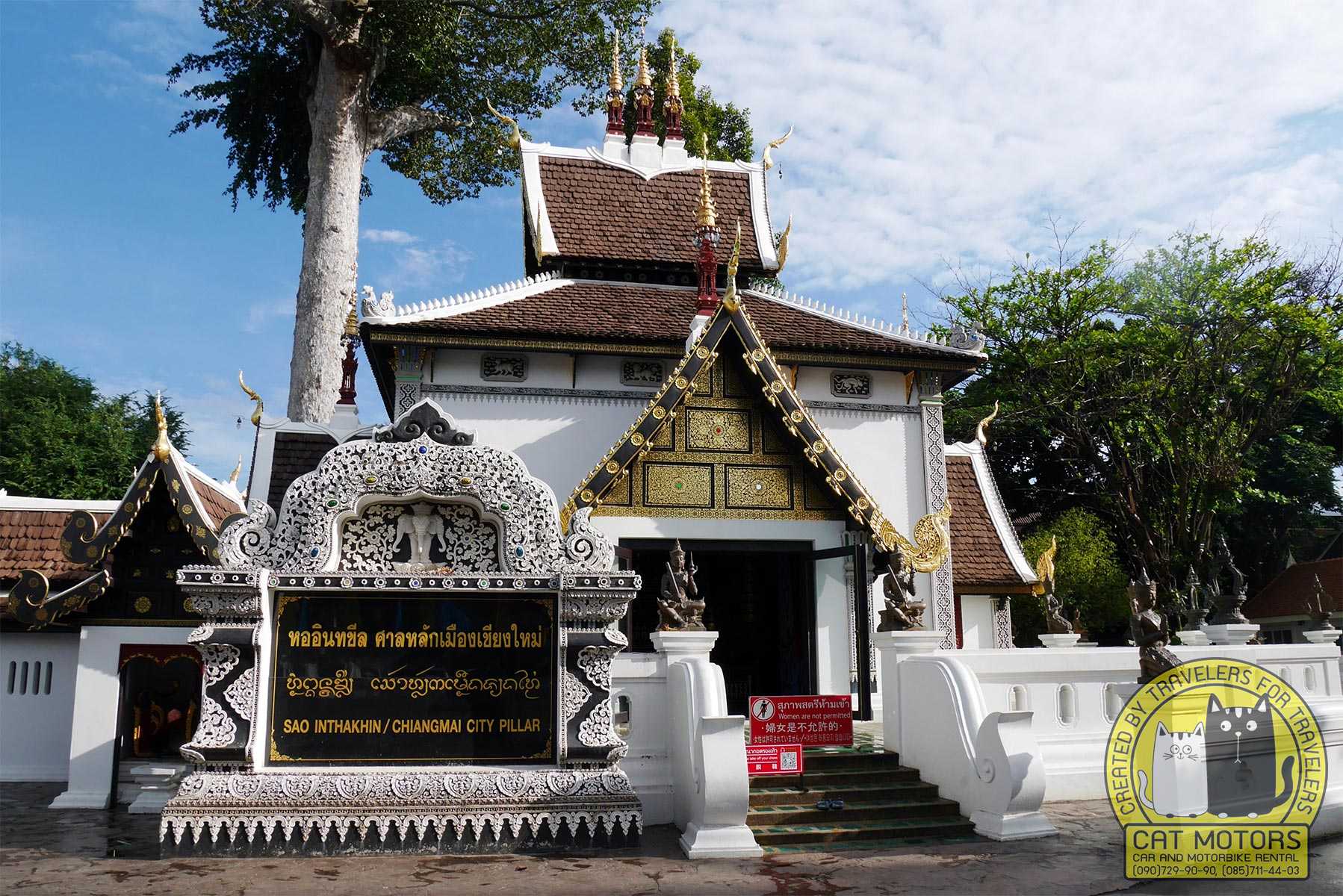
Splendors of Design and Architecture
The reconstructed Eastern niche showcases the captivating allure of Lanna-style architecture, characterized by its steep roofs, opulent wood carvings, and a palette of vibrant red and gold hues. The temple complex comprises various buildings, each boasting its own distinctive features and purposes.
The grand centerpiece is the Chedi, an awe-inspiring pagoda that reigns as the complex’s largest structure and the epitome of the temple’s essence. With its four sides, each adorned with an intricately carved staircase leading to a niche cradling a sacred Buddha image, the pagoda mesmerizes with its embellishments of elephants, serpents, mythical creatures, and enchanting floral and geometric motifs.
The construction materials employed throughout the temple’s evolution vary, adapting to different periods and buildings:
- The original Chedi boasted a sturdy foundation of bricks and mortar, draped in stucco delicately painted in white and beige hues and occasionally embellished with gilded or lacquered
- Ceramic tiles, glass mosaics, and metal ornaments adorned its majestic presence.
- During the restoration endeavors of the early 1990s, traditional materials found continuity, intertwined with the integration of concrete and steel, reinforcing the temple’s structural integrity.
Wat Chedi Luang boasts an array of distinctive and extraordinary features, setting it apart as a true gem among Chiang Mai’s temples.
- Foremost among these is the resplendent jade replica of the revered Emerald Buddha, an embodiment of immense sanctity within Thai Buddhism. And the replica now graces the same hallowed niche as its predecessor.
- Another notable feature resides in the city pillar (Sao Inthakin), legend as a revered protector of Chiang Mai and its inhabitants, sheltered within a quaint edifice on the temple grounds, cocooned by three sacred dipterocarp trees.
- Thirdly, the viharn, or prayer hall, houses the majestic Phra Chao Attarot, a standing Buddha statue cast in an exquisite brass alloy, its lineage tracing back to the 14th century.
Without a doubt, as you enter the sacred area, you’ll notice how remarkable this masterpiece embodies the pinnacle of Lanna’s artistry and craftsmanship.
How To Explore The Wonders Of Wat Chedi Luang
For those eager to delve into the fascinating history and architectural splendor of Wat Chedi Luang, visiting this awe-inspiring temple is a must.
- Open daily from 8 am to 5 pm, the admission fee is a nominal 40 baht per person for foreigners, while Thai citizens enjoy free entry.
- Accessible on foot from any of the old city gates or via a budget-friendly ride in a red truck (songthaew) or rented vehicle, reaching the temple is a breeze.
Upon arriving at Wat Chedi Luang, prepare to be enchanted by the sheer magnitude and beauty of the dominant Stupa that graces the temple grounds. Immerse yourself in the allure of other noteworthy structures, including the:
- Assembly hall
- The city pillar shrine
- The monk chat pavilion
Embrace the opportunity to witness the Phra Yok statue (Emerald Buddha) residing in the eastern niche of the Stupa.
And to ensure a pleasant experience, there are a few essential guidelines you’ll need to know. Such as:
- Dress respectfully, covering your knees, shoulders, and midriff as a sign of reverence when entering the temple premises, as it is essential to honor the site’s sacredness and show respect to the local culture and customs.
- Remember to remove your shoes before stepping into any of the buildings to uphold the traditional practice of keeping the temple clean and maintaining its sanctity.
- Refrain from touching or pointing at Buddha images or monks while maintaining a gentle and subdued voice, as these actions demonstrate reverence and preserve the tranquility that envelops the spiritual atmosphere of Wat Chedi Luang.
- For an enriching experience, consider engaging in the monk chat program, available daily from 9 am to 6 pm, offering insightful discussions on Buddhism. Sundays are known to be crowded, so it would be best to pick any day before then for a fully immersive experience.
- If you seek inner tranquility, partake in meditation classes or attend a serene chanting session (discussed on-site).
Wat Chedi Luang epitomizes the essence of Chiang Mai’s culture and spirituality, offering a captivating journey that leaves visitors with a profound appreciation for this ancient sanctuary.
Explore The Surrounding Gems
Once you’ve marveled at the wonders of Wat Chedi Luang, there’s a whole realm of captivating attractions and activities awaiting your exploration in close proximity. Just beyond the temple’s walls, you’ll discover an array of experiences that will enrich your visit.
Take your pick from the following popular options, or venture further into the realm of your desires, be it deepening your spiritual quest at another sacred wat, embarking on a thrilling night safari, or simply meandering through the charming streets of the town. That said, keep the following in mind:
Wat Phra That Doi Suthep: Ascend To Sacred Heights
Wat Phra That Doi Suthep is among Chiang Mai’s holiest and most iconic temples atop a mountain overlooking the city. Immerse yourself in the allure of the golden Stupa, bask in panoramic views, and uncover the fascinating tales that have shaped its rich history.
The scenic journey lasts about 30 minutes, culminating in an experience that will leave an indelible mark. The temple welcomes visitors daily from 5 am to 9 pm, with an admission fee of 30 baht per person.
Chiang Mai Night Safari: A Wild Nocturnal Adventure
For those seeking a dash of thrill and adventure, visiting the Chiang Mai Night Safari promises an unforgettable experience. Dive into the nocturnal realm of wildlife as you encounter mesmerizing creatures from diverse continents, including majestic lions, awe-inspiring tigers, graceful zebras, and elegant giraffes.
Engage in a captivating night safari tram ride, be mesmerized by laser light shows and musical fountain displays, and witness the spectacle of a thrilling fire show. Located approximately 12 kilometers from Wat Chedi Luang (Google Map), convenient transportation options such as taxis or shuttle buses will whisk you to this enthralling destination.
Operating hours are from 11 am to 10 pm (tickets available until 9 pm), and admission fees vary depending on the chosen package, starting from 50 baht per person.
Siam Dragon Show Chiangmai: A Cultural Extravaganza
Experience a captivating blend of entertainment and culture at the mesmerizing Siam Dragon Cabaret Show in Chiang Mai. Brace yourself for a sensational spectacle featuring traditional Thai dances, elaborate costumes, enchanting music, and stunning special effects.
Interact with the talented performers, capture Instagram-worthy moments, and immerse yourself in the vibrant tapestry of Thailand’s fine arts department. Just over a kilometer (just under a mile) from Wat Chedi Luang along Huay Kaew Road (Google Map), you can conveniently reach the show by hopping on a red truck (songthaew), a tuk-tuk, or rented transport.
The show operates from 10 am to 9:30 pm, offering ample opportunities to witness this extraordinary display. Ticket prices for foreigners are set at 450 baht per person, ensuring an unforgettable cultural experience. Check out their Facebook page for more details or their Instagram for more eye candy!
Wat Phra Singh: Another Lanna Masterpiece Awaits
If Wat Chedi Luang is a marvel you need more of, then make room for another architectural gem within the old city’s embrace as you set foot in Wat Phra Singh. Admire the intricate beauty of Lanna-style architecture, behold the revered Buddha image known as Phra Singh (Lion Buddha), and indulge in the serene ambiance that envelopes this sacred space.
The assembly hall, library, and attractive murals depicting the life of Buddha will enthrall your senses. A mere 10-minute walk (Google Map) from Wat Chedi Luang, this temple presents an effortless exploration opportunity. Operating hours are from 6 am to 5 pm, and the entrance fee for foreigners is a nominal 20 baht per person.
The Enchanting Old City: A Tapestry Of Charm And History
Immerse yourself in the captivating allure of Chiang Mai’s old city, a treasure trove brimming with history and charm. Embark on a journey to temples such as Wat Chiang Man, Wat Pan Tao (Google Map), and Wat Suan Dok, each showcasing their unique architectural wonders and spiritual meaning. Traverse the ancient walls and meander along the moat, soaking in the ambiance of a bygone era.
Enjoy a delightful shopping experience at local markets, tempt your taste buds with delectable street food, or simply unwind at a cozy cafe or pampering spa. The old city beckons for exploration and its pedestrian-friendly streets and bicycle-friendly paths invite you to delve into its hidden treasures.
Wat Phra That Doi Kham: Marvel At The Golden Temple
Wat Phra That Doi Kham is another excellent Chiang Mai temple tour worth exploring. It dates back to the 7th century and is located on a hilltop overlooking the city, surrounded by lush forest and naga stairways.
Admire the gilded Chedi that houses the Buddha’s relics, the super-sized reclining Buddha statue, and the panoramic city views from this tranquil and sacred site. You can also make a wish in the famous Luang Pho Than Jai Buddha image. The temple is open daily from 8 am to 5 pm, with an admission fee of 30 baht per person.
Map & Direction
Additional Information
Entrance Fee
The fee is 40 Baht for adults, 20 Baht for children. The temple remains free to visit for Thai people.
Work Hours
Wat Chedi Luang open daily from 8 AM to 5 PM.
Dress Code
Our Summary
Wat Chedi Luang stands as a testament to the rich history, cultural significance, and architectural splendor of Chiang Mai. This ancient temple, dating back to the 14th century, carries within its walls a fascinating past that encompasses the rise and fall of the Lanna Kingdom.
Despite the trials of time and various restoration efforts, Wat Chedi Luang remains a majestic marvel, with its grand Chedi and intricate designs showcasing the artistry of the Lanna style. Visitors to the temple can immerse themselves in the spiritual atmosphere, explore the wonders of the Chedi Luang Stupa, and engage in cultural experiences such as the monk chat program.
Beyond the temple, the surrounding attractions and activities offer a realm of exploration, from the sacred heights of Wat Phra That Doi Suthep to the thrilling adventures of the Chiang Mai Night Safari. Wat Chedi Luang and its surroundings provide a profound journey that captivates the hearts of all who visit, leaving them with a deep appreciation for the rich heritage and spiritual traditions of Chiang Mai.
FAQ
Chedi Luang was built by order of King Saen Muang Ma, the 7th king of the Mangrai dynasty and reigning prince of Chiang Mai, to bury his father’s ashes.
Much later, in the temple grounds, with the support of the deeply respected monk Chan Sirichando and Kaew Nawarat, the last ruler of the Lanna Kingdom, other temple buildings were built, such as Vihara Luang, a meditation hall surrounded by cells and an altar with a Buddha statue.
Wat Chedi Luang is a Buddhist temple in Chiang Mai, Thailand. It is used as a place of worship and also as a historical site for cultural events, such as temple fairs and religious ceremonies.
Wat Chedi Luang is generally open from 8:00 AM to 5:00 PM daily.
There is usually a small fee to enter Wat Chedi Luang, which is used for the upkeep and preservation of the temple.
Like many temples in Thailand, visitors are expected to dress respectfully. This typically means clothing that covers the shoulders and knees.
Wat Chedi Luang, or the Temple of the Big Stupa, was built in the 14th century. It was once home to the Emerald Buddha, one of Thailand’s most sacred religious relics.
Yes, guided tours are usually available. They can provide deeper insights into the temple’s history and significance.
Yes, the temple often hosts Buddhist ceremonies and festivals, including the Inthakin City Pillar Festival held annually.
The temple’s large chedi (pagoda), which was partially damaged in an earthquake, is a prominent feature. There is also a city pillar and a large Dipterocarp tree, both of which are significant in local traditions.
Yes, photography for personal use is generally allowed, but always respect the religious activities and spaces.
Visitors should dress respectfully, speak softly, and avoid pointing their feet towards Buddha images or monks, which is considered disrespectful in Thai culture.
Wat Chedi Luang is located in the old city of Chiang Mai, which can be reached by tuk-tuk, taxi, or even on foot if you’re nearby.
Yes, the old city of Chiang Mai is home to many other historic temples, markets, and a variety of local and international restaurants.
Early mornings or late afternoons during weekdays can often be less crowded. However, the temple may be busy during religious holidays or festivals.
Set out on an unforgettable journey through Northern Thailand with our extensive travel guides. They showcase the best scenic routes and local highlights. For those ready to begin, explore our motorbike rental in Chiang Mai homepage. Ensure you review our terms and conditions to be well-prepared. These resources will help you confidently navigate mountain trails and quaint villages.
Our travel advice sections provide crucial tips on staying safe and maximizing your travel experience. Learn about the best times to visit key attractions, participate in local festivals, and manage various road conditions. These insights will enrich your journey, making it both enjoyable and secure. Let us lead you through Northern Thailand’s stunning landscapes and vibrant culture, ensuring your adventure is truly memorable.
- Author: Natcha Lindberg
- Updated: 15/09/2025
- No Comments




